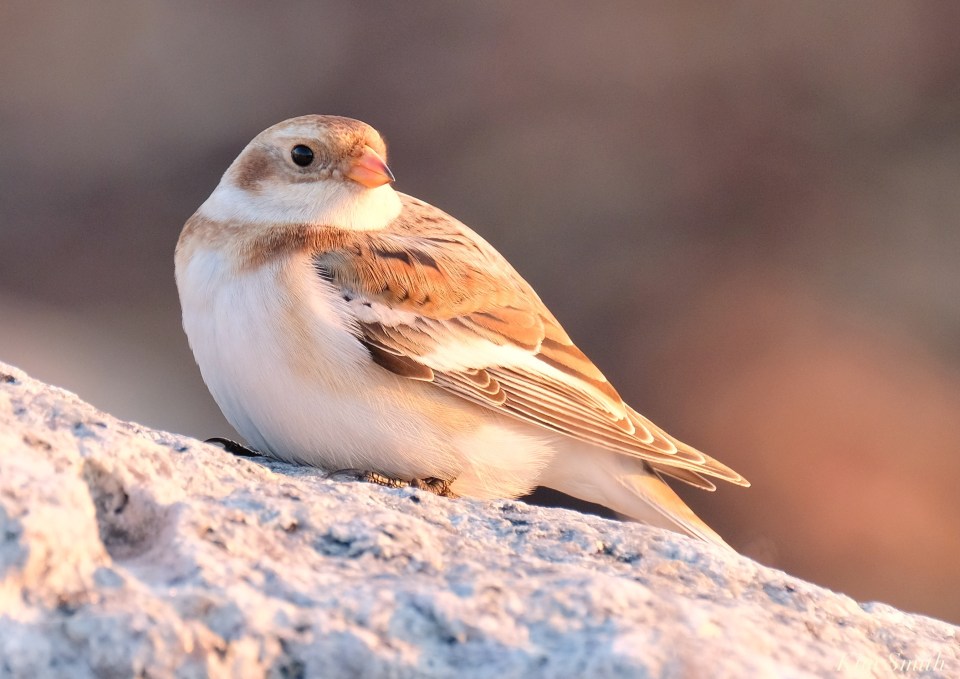 At this time of year flocks of Snow Buntings small and large can be found at our local sandy beaches and rocky coastlines. I am finding them throughout my roaming range, from Plum Island to South Boston.
At this time of year flocks of Snow Buntings small and large can be found at our local sandy beaches and rocky coastlines. I am finding them throughout my roaming range, from Plum Island to South Boston.
What is not to love about this sweetly charming tubby little songbird, including its name, Snow Bunting, and nickname Snowflake. I am often alerted to the Snow Buntings presence by their distinct and highly varied social chattering. More than once though I and it have been startled as one flutters away to avoid my footsteps. The alarmed Snow Bunting will call loudly, warning its flock mates of a human, and then they will all lift to the skies in a swirling unison of Snowflakes.
Snow Buntings especially love rocky crevices and outcroppings. They nest in rocky areas of the Arctic tundra and while resting and foraging along Massachusetts coastlines, Snow Buntings go largely undetected in the similarly colored rocks.
The conical -shaped bill of Snow Buntings tells us that they are are seed eaters and in autumn and winter, Massachusetts beaches provide a wealth of seed heads remaining on expired wildflowers and grasses. Beach stones, along with piles of beach debris, trap seeds and I have captured a number of photos where the foraging songbirds pop up between the rocks with a mouthful of seed.
Early morning invariably finds Snow Buntings sleeping amongst beach rocks. It is a joy to watch as they slowly awaken, stretching and floofing, before tumbling out in a burst of black, white, and rusty brown to forage for the day.
Remarkably, Snow Buntings are nocturnal migrants. They are able to detect the geomagnetic field of the Earth for guidance to their breeding and overwinter grounds. The orientation of the Snow Bunting during migration is independent of any visual cue.
The 40 plus year old annual Christmas Bird Count shows a 64 percent decline in the Snow Bunting population. Climate change and neonicotinoids (pesticides) are thought to be the main reason for the decline.

















Pingback: FLIGHT OF THE SNOW BUNTINGS | Kim Smith Films
Pingback: SNOWBIRD SNOWFLAKES AND WHAT DOES BEACH HABITAT RESTORATION LOOK LIKE IN WINTER TIME? | Kim Smith Films